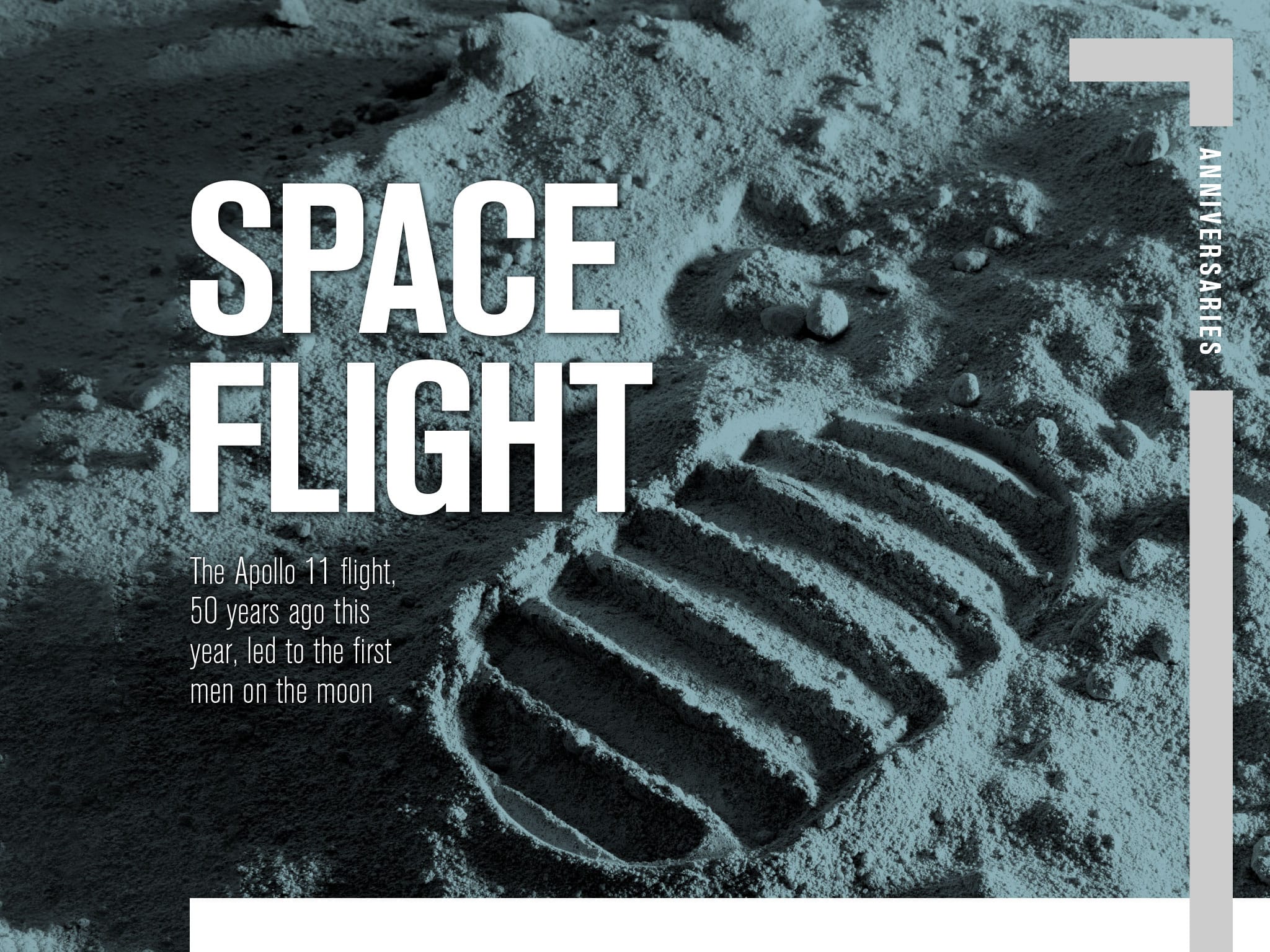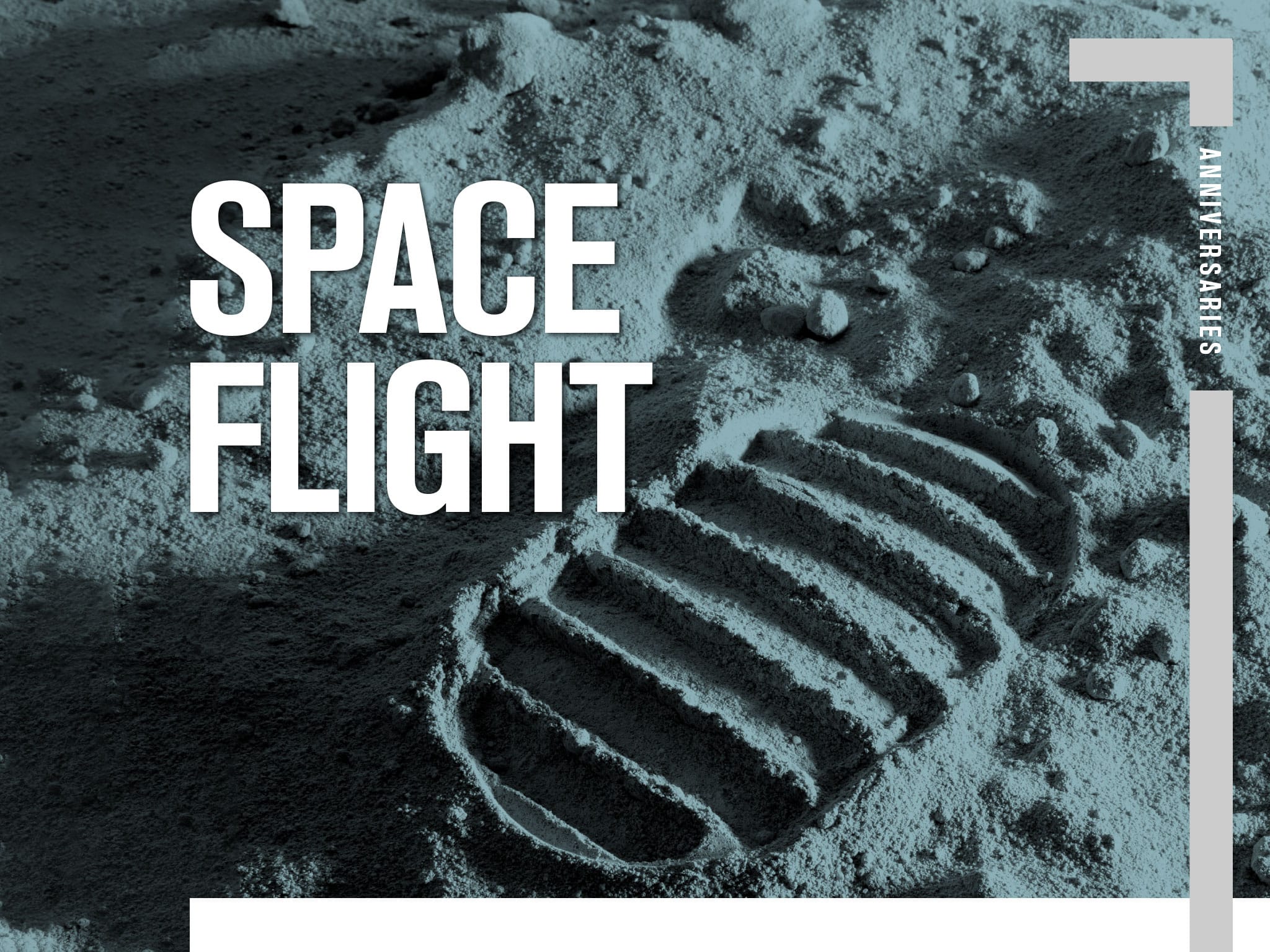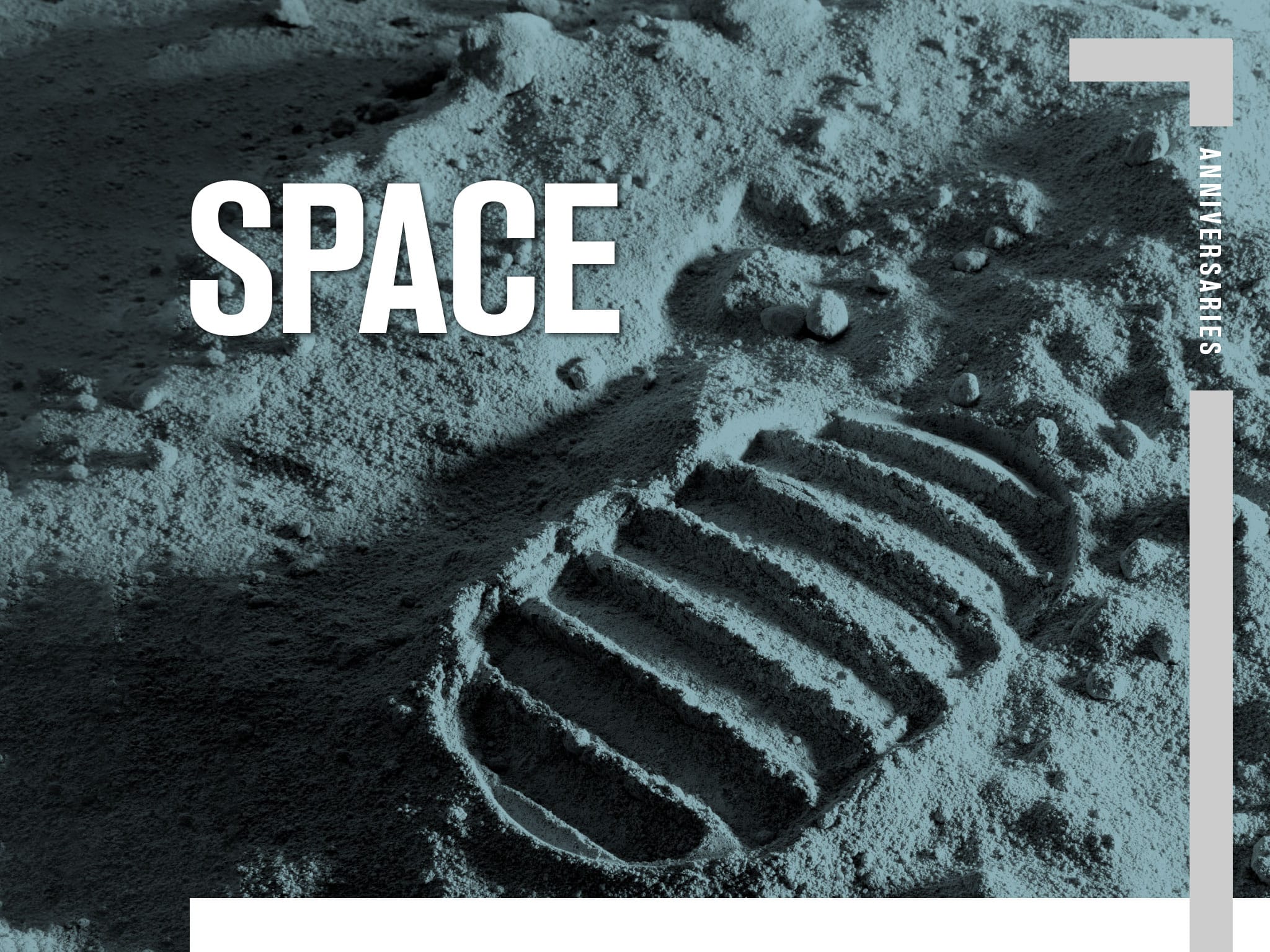


















The Apollo 11 flight, 50 years ago this year, led to the first men on the moon By Captain Jeremy Feldman, Log Board member 0 years ago, on 16th July 1969, the crew of Apollo 11 woke up at 04:00, showered, shaved and then sat down to eat the traditional prespace-flight breakfast of steak and eggs, alongside the backup crew. They then donned their space suits and began breathing pure oxygen. After two hours, they headed to launch site 39 at the Kennedy Space Center and were secured into their seats in the command module, known as Columbia. Two hours later, the closeout crew said their goodbyes, secured the hatches shut, and vacated the launch pad, where the awesome Saturn V rocket was primed to launch Apollo 11 into space. This was no ordinary mission. It was the height of the space race, and the US had landing on the moon squarely in its sights. Eight years earlier, the Soviet Union had launched the first person into space, Yuri Gagarin, and American pride had been wounded. President Kennedy declared he wanted the US to land a man on the moon before the decade was out, and the Apollo project was born. Preceded by Project Gemini, there were four other Apollo missions before the Apollo 11 launch. Commanded by Neil Armstrong, the crew included Buzz Aldrin and Michael Collins. LIFT OFF At 13:32 UTC, the enormous Saturn V ignited its engines and, 8.9 seconds later, began to lift off the launch pad. Twelve seconds later, it cleared the tower, burning about 13 tonnes of fuel per second and delivering about 7.5 million pounds of thrust. After launch, the Saturn V rocket sequentially detached its first two stages during escape from the Earths gravitational well, and the third stage pushed the spacecraft towards the moon with a manoeuvre called the trans-lunar injection. The spacecraft was made up of three primary modules: the lunar module, known as Eagle; the command module, known as Columbia; and the service module. On the final descent to the lunar surface, it was clear that Eagle was descending too fast for landing. Armstrong took over manual control and piloted it to a landing site on the lunar surface, known as the Sea of Tranquillity, with only 25 seconds of propellant remaining. This certainly puts the 30 minutes of final reserve fuel into context. Three hours later, and Armstrong descended the nine-stepped ladder from Eagle, and took his first steps on the lunar surface. One small step for man, one giant leap for mankind. Words that will be forever immortalised in history. It was estimated that more than one million people watched the launch live from thebeaches and roads in Florida, and 25million people watched Armstrong and Aldrin take their first steps on the moon on their televisions. Although the US and Soviet space race is over, US vice-president Mike Pence recently said the country was now in aspace race with China, and announced that he wants the US to put astronauts back on the moon within five years. In another 50 years from now, landing on the moon may well be as routine as landing an airliner. Just imagine the type rating training conversion course involved in that! ANNIVERSARIES SPACE FLIGHT